Discover 50 hidden attractions, cool sights, and unusual things to do in South Korea. Don't miss out on these must-see attractions: Changdeokgung (Seoul), Gyeongbokgung (Seoul) or Deoksugung (Seoul).
Below, you can find the list of the most amazing places you should visit in South Korea.
Table of Contents
Changdeokgung, Seoul
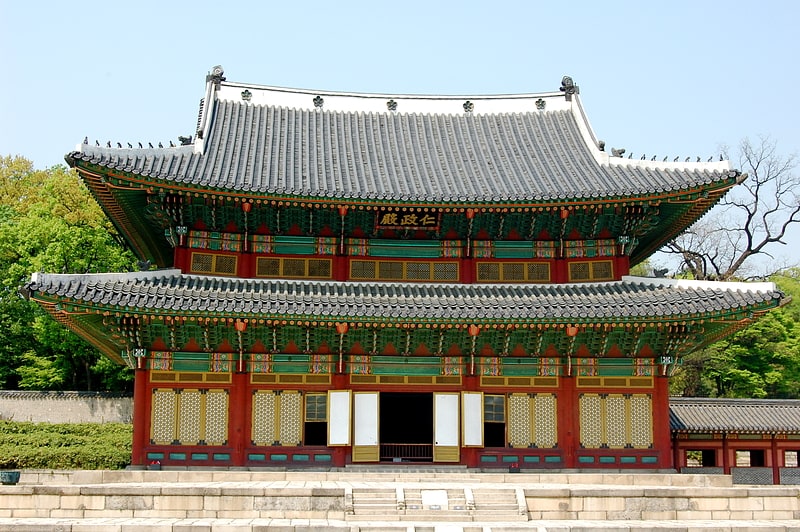
Also known as: 창덕궁
Joseon dynasty palace and gardens. Changdeokgung, also known as Changdeokgung Palace or Changdeok Palace, is set within a large park in Jongno District, Seoul, South Korea. It is one of the "Five Grand Palaces" built by the kings of the Joseon Dynasty. As it is located east of Gyeongbok Palace, Changdeokgung—along with Changgyeonggung—is also referred to as the "East Palace".
Changdeokgung was the most favored palace of many Joseon kings and retained many elements dating from the Three Kingdoms of Korea period that were not incorporated in the more contemporary Gyeongbokgung. One such element is the fact that the buildings of Changdeokgung blend with the natural topography of the site instead of imposing themselves upon it. Like the other Five Grand Palaces in Seoul, it was heavily damaged during the Japanese occupation of Korea (1910–1945). Currently, only about 30% of the pre-Japanese structures of the East Palace Complex (Changdeokgung together with Changgyeonggung) survive.[1]
Address: 99 Yulgok-ro, Waryong-dong, 110-360 Jongno-gu (종로구)
Gyeongbokgung, Seoul
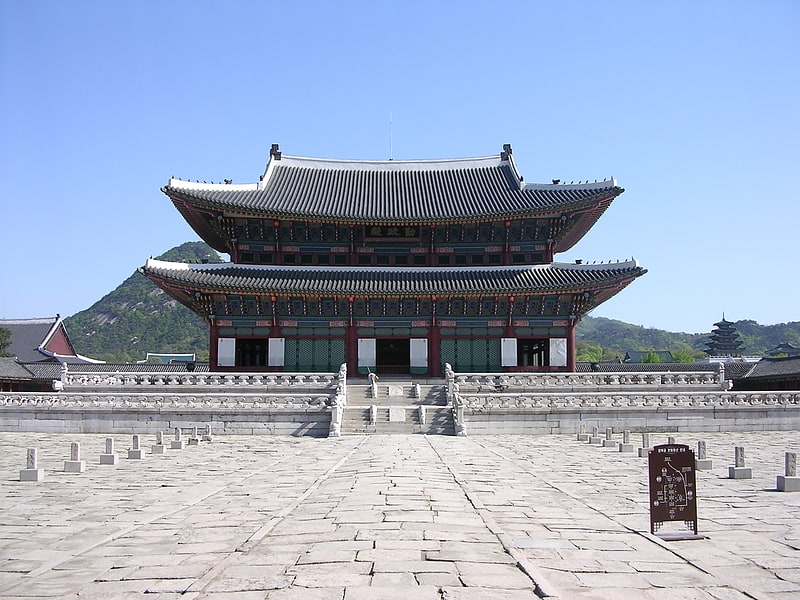
Also known as: 경복궁
Historic palace with tours and a museum. Gyeongbokgung, also known as Gyeongbokgung Palace or Gyeongbok Palace, was the main royal palace of the Joseon dynasty. Built in 1395, it is located in northern Seoul, South Korea. The largest of the Five Grand Palaces built by the Joseon dynasty, Gyeongbokgung served as the home of Kings of the Joseon dynasty, the Kings' households, as well as the government of Joseon.
Gyeongbokgung continued to serve as the main palace of the Joseon dynasty until the premises were destroyed by fire during the Imjin War (1592–1598) and abandoned for two centuries. However, in the 19th century, all of the palace's 7,700 rooms were later restored under the leadership of Prince Regent Heungseon during the reign of King Gojong. Some 500 buildings were restored on a site of over 40 hectares. The architectural principles of ancient Korea were incorporated into the tradition and appearance of the Joseon royal court.
In the early 20th century, much of the palace was systematically destroyed by Imperial Japan. On January 21, 1963, it was designated as a cultural property. Since the 1990s, the walled palace complex is gradually being restored to its original form. Today, the palace is arguably regarded as being the most beautiful and grandest of all five palaces. It also houses the National Palace Museum and the National Folk Museum within the premises of the complex.[2]
Address: 161 Sajik-ro, Jongno 1(il).2(i).3(sam).4(sa), 110-050 Jongno-gu (종로구)
Deoksugung, Seoul
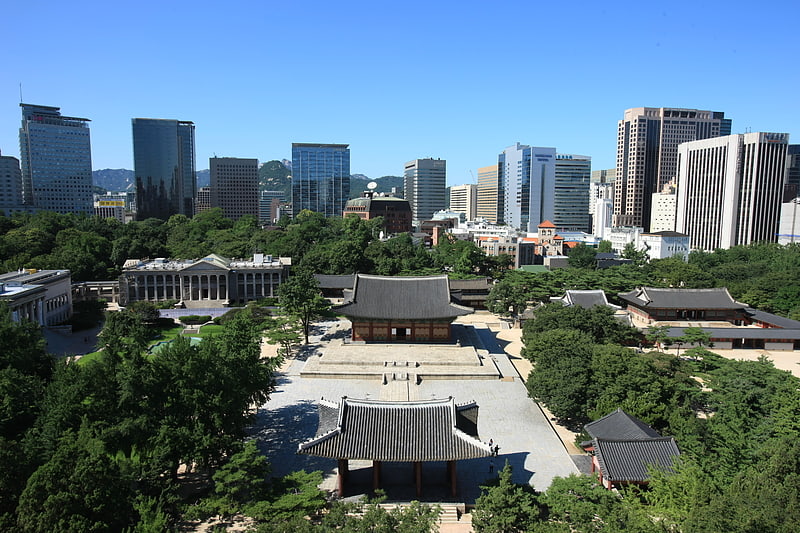
Also known as: 덕수궁
Palace with a Royal Guard ceremony. Deoksugung, also known as Gyeongun-gung, Deoksugung Palace, or Deoksu Palace, is a walled compound of palaces in Seoul that was inhabited by members of Korea's Royal Family during the Joseon monarchy until the annexation of Korea by Japan in 1910. It is one of the "Five Grand Palaces" built by the kings of the Joseon Dynasty and designated as a Historic Site. The buildings are of varying styles, including some of natural cryptomeria wood), painted wood, and stucco. Some buildings were built of stone to replicate western palatial structures.
In addition to the traditional palace buildings, there are also forested gardens, a statue of King Sejong the Great and the National Museum of Art, which holds special exhibitions. The palace is located near City Hall Station.
Deoksugung, like the other "Five Grand Palaces" in Seoul, was heavily damaged during the colonial period of Korea. Currently, only one third of the structures that were standing before the occupation remain.
Deoksugung Palace is special among Korean palaces. It has a modern and a western style garden and fountain. The Changing of the Royal Guard, in front of Daehanmun (Gate), is a very popular event for many visitors. The royal guard was responsible for opening and closing the palace gate during the Joseon Dynasty. Outside of the palace is a picturesque road with a stone wall.
The Deoksugung Stonewall walkway is at the heart of a popular urban myth in Seoul, as it is said that all couples who walk down this road are fated to break-up.[3]
Address: 99 Sejong-daero, Jeong-dong, 100-120 Jung-gu (중구)
Hwaseong Fortress, Suwon
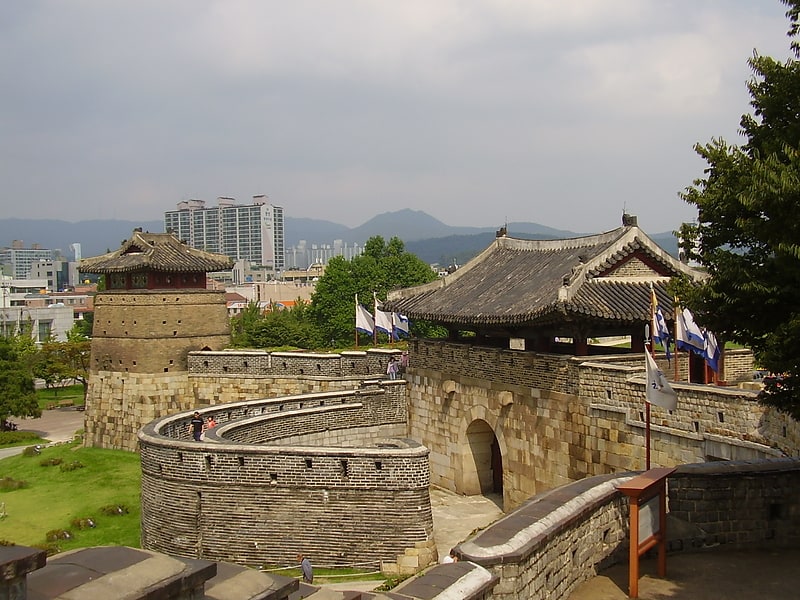
Also known as: 수원 화성
1700s city walls and 48 original buildings. Hwaseong Fortress or Suwon Hwaseong is a fortification surrounding the centre of Suwon, the provincial capital of Gyeonggi-do, in South Korea. It was built from 1794 to 1796 by King Jeongjo of the Joseon dynasty to house and honour the remains of his father, Prince Sado. Sado had been executed by being locked alive inside a rice chest by his own father King Yeongjo after failing to obey a command to commit suicide. Located 30 kilometres south of Seoul and enclosing much of central Suwon, the fortress includes King Jeongjo's palace Haenggung. The fortress and enclosed palace were designated as a World Heritage site by UNESCO in 1997. It comprises among many other features the palace, a perimeter wall, four main gates, and two sluicegates over the Suwoncheon, Suwon's main stream, which flows through the centre of the fortress.[4]
Gyeongju National Museum, Gyeongju
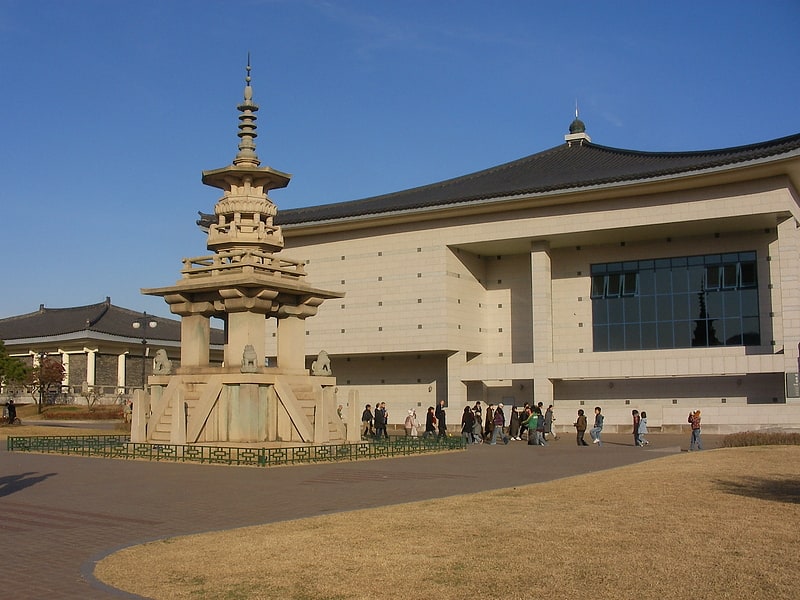
Also known as: 국립경주박물관
Exhibits on Gyeongju's royal heritage. The Gyeongju National Museum is a museum in Gyeongju, North Gyeongsang Province, South Korea. Its holdings are largely devoted to relics of the Silla kingdom, of which Gyeongju was the capital.
The museum is located immediately adjacent to the royal tomb complex, in an area which also includes the Gyerim forest, Cheomseongdae observatory, Banwolseong palace, and Anapji Pond.[5]
Address: 186 Iljeong-ro, Inwang-dong, 780-150 Gyeongju
Dabotap, Gyeongju
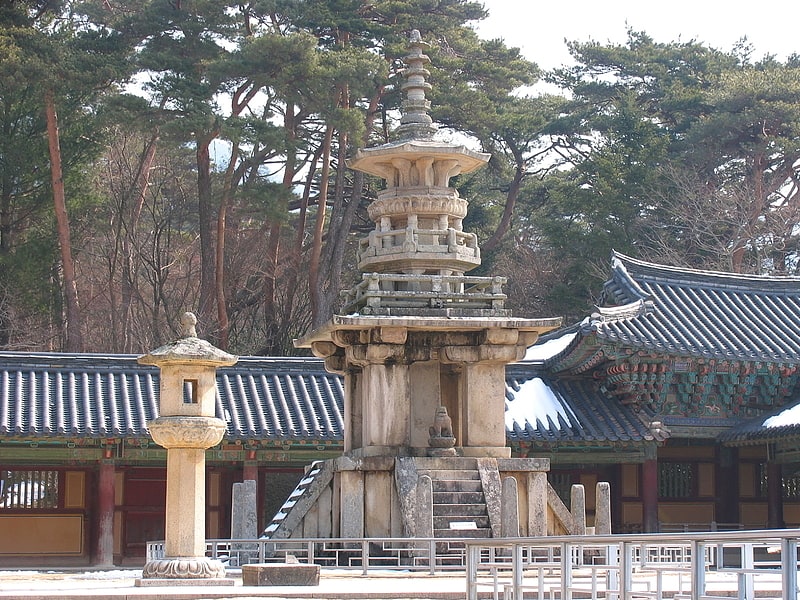
Also known as: 경주 불국사 다보탑
This refers to a pagoda containing the relics of Dabo Yeorae.
Dabo Pagoda, also known as pagoda of many treasures, is located in the temple of Bulguksa in Gyeongju, South Korea. From entering the temple through the Cheongun and Baegun Bridge, Dabotap is located on the right side, opposing Seokgatap on the left side. The pagoda is supposed to have been built in 751, the 10th year of the Shilla king Gyeongdeok. It is currently designated as National Treasure no. 20.
The 3 story pagoda stands 10.29 metres tall and was built in an ornate style not seen in other Buddhist countries. The sculpture techniques used are unique for its time and include delicate features.
It has a staircase on each of the four sides. Four stone square pillars support the pagoda's first roof, where is built a square stone railing. Inside the railing is the body of the pagoda, and above it, standing on the second octagonal-shaped roof surrounded by an octagonal stone railing, are eight bamboo-shaped stone pillars support the octagonal-shaped lotus stone carved with sixteen petals. Above it eight stone pillars support the third octagonal-shaped roof. Of the four stone lions guarding the top of the staircases only one remain. A second one is located at the British Museum in London. As for the whereabouts of the other two, they are still unknown. The pagoda was dismantled by the Japanese in the 1920s but there is no evidence of any relics found in the pagoda.
The pagoda is currently depicted on the obverse of the 10 won coin.[6]
Gyeongju World, Gyeongju
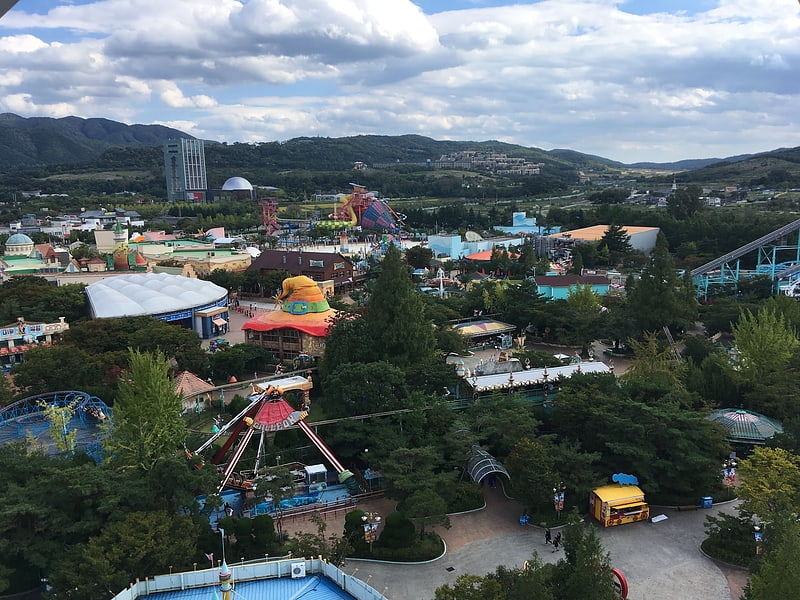
Also known as: 경주월드
Theme park in Gyeongju, South Korea. Gyeongju World is a theme park in Gyeongju, Gyeongsangbuk-do, South Korea. Gyeongju World is composed of 'X-zone', 'Snow sled garden', and 'Wizard Garden'. The 'X-zone' is composed of the Paethon, the Megadrop, the Tornado, and the Exploration of Grand Canyon. There are ski sleds, adult sleds, and children's sleighs in Snow sled garden. Wizard Garden is a children's termament with a wide variety of children's rides.[7]
Address: 544 Bomun-ro, 38117 Gyeongju
Jagalchi Market, Busan
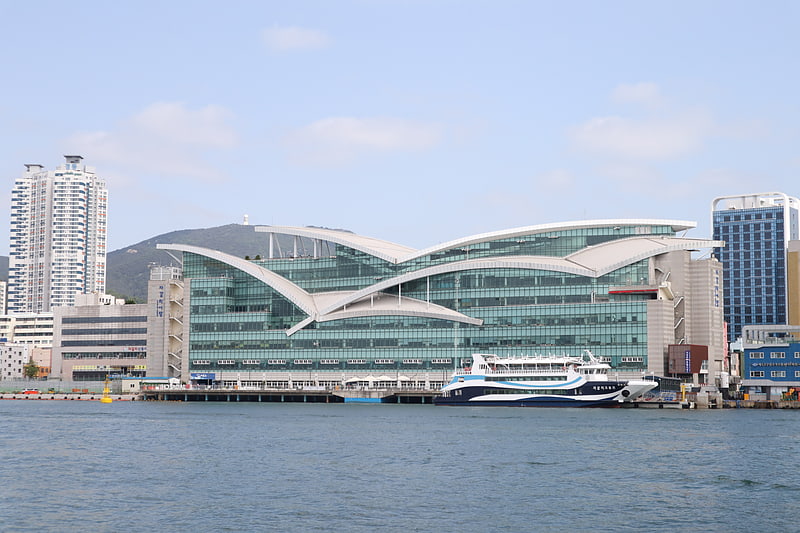
Also known as: 자갈치시장
The largest seafood market in Korea. Jagalchi Fish Market is a fish market in the neighborhood of Nampo-dong in Jung-gu, and Chungmu-dong, Seo-gu, Busan, South Korea. The market is located on the edge of Nampo Port, Busan. It is considered to be the largest fish market in South Korea.
The name is said to have originated from jagal (자갈 gravel in Korean) because the market used to be surrounded by gravel. This is one of the ten landmarks of Busan, so many tourists visit there to shop.
The market is known for the “Busan wives”. They are known for their strong will determination to provide financial support for their family and pay for their children’s education. Another name for these women is jagalchi ajumma. It references back to when these women would peddle the street selling goods after the Korean War. The market hosts the Busan Jagalchi Festival in autumn. The festival’s slogan is “Oiso! Boiso! Saiso!” (“Come! See! Buy!”). Individuals can participate in singing, dancing, catching fish, and eating fresh fish.
Various good are found in this market, which spans 3 kilometers. Near the Yeongdo Grand Bridge can be found dehydrated anchovies, sea laver, and various shellfish. Across from the city hall, shops sell herbal medicine and animal-based remedies.[8]
Address: Nampo-dong, Jung-gu, Busan (중구)
Beomeosa, Busan
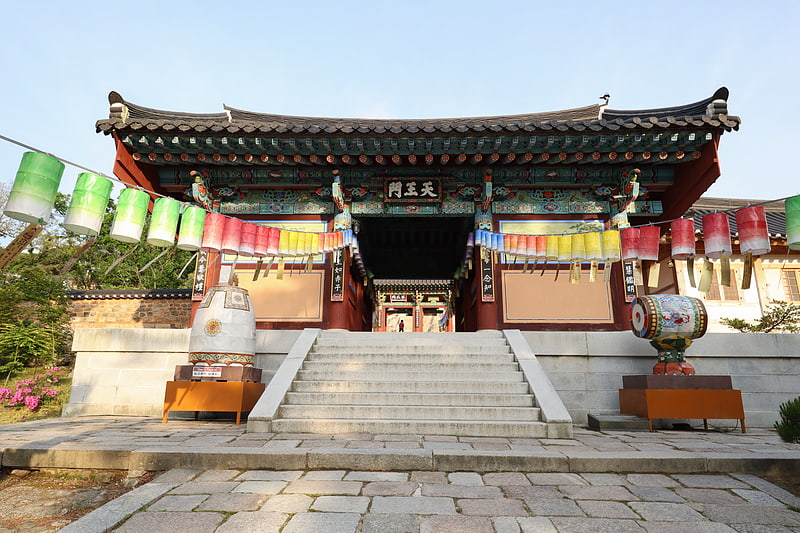
Also known as: 범어사
Temple in Busan, South Korea. Beomeosa is a head temple of the Jogye Order of Korean Buddhism in Cheongnyong-dong, Geumjeong-gu, Busan, South Korea. Built on the slopes of Geumjeongsan, it is one of the country's best known urban temples.[9]
Address: 금정구 범어사로 250, 609-844 부산광역시 (금정구)
Haeinsa, Gayasan National Park
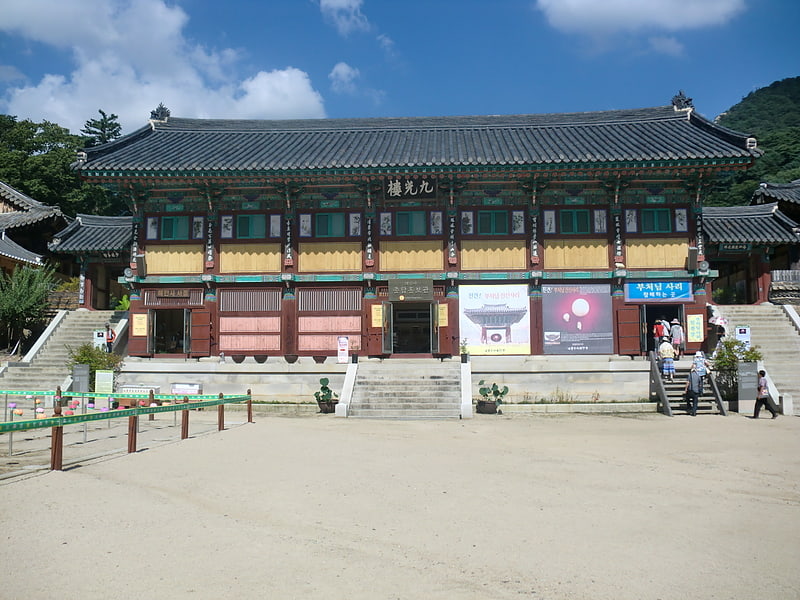
Also known as: 해인사
Temple in Hapcheon County, South Korea. Haeinsa is a head temple of the Jogye Order of Korean Seon Buddhism in Gayasan National Park, South Gyeongsang Province, South Korea. Haeinsa is most notable for being the home of the Tripitaka Koreana, the whole of the Buddhist Scriptures carved onto 81,350 wooden printing blocks, which it has housed since 1398.
Haeinsa is one of the Three Jewels Temples, and represents Dharma or the Buddha’s teachings. It is still an active Seon (선, 禪) practice center in modern times, and was the home temple of the influential Seon master Seongcheol (성철, 性徹), who died in 1993.[10]
Address: 122, Haeinsa-gil, Gaya-myeon, 50200 Hapcheon-Gun
Yongdusan Park, Busan
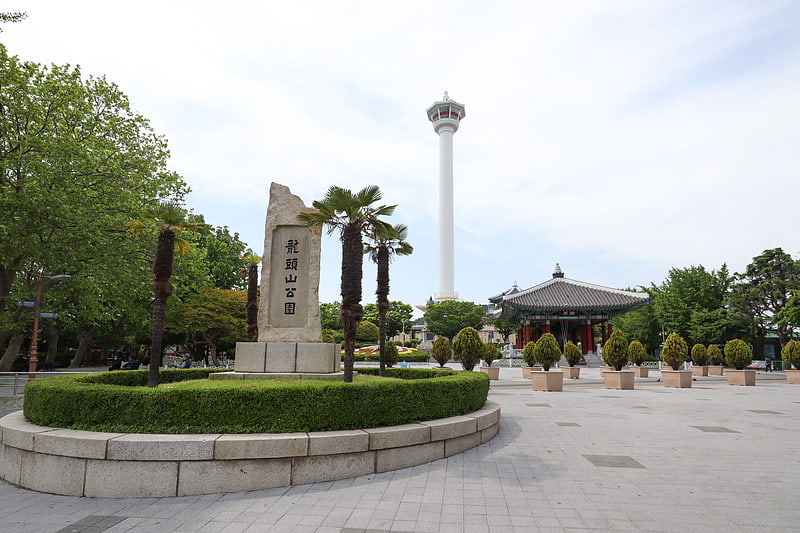
Also known as: 용두산공원
Mountain park with an observation tower. Yongdusan Park is a park located in Jung-gu, Busan, South Korea. The 120-meter-high Busan Tower is located here.
Yongdu means “dragon’s head” and “san” means “mountain”. The name is an allusion to the similarity of the mountain park, which is said to resemble a dragon’s head. The park occupies an area of 69,000 square meters. It has 70 different species of trees growing in it.[11]
Address: 37-55, Yongdusan-gil, Jung-gu, 48950 Busan (중구)
Cheonjiyeon Waterfall, Seogwipo-Si
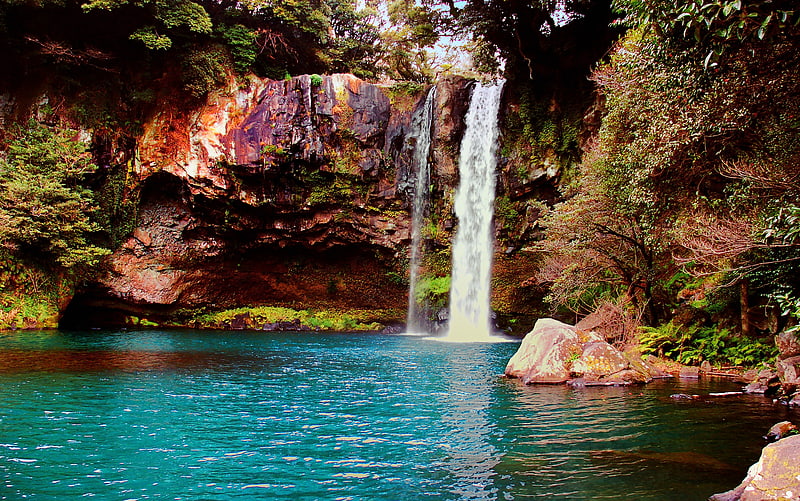
Also known as: 천지연폭포
Waterfall in South Korea. Cheonjiyeon Waterfall is a waterfall on Jeju Island, South Korea. Literally, the name Cheonjiyeon means sky connected with land. It is one of the main tourist attractions on Jeju-do. It is 22 m high and 12 m wide. Though water always falls in one particular area, depending on the amount of recent rain, the water may spread out. At the bottom of the waterfall is an artificial pond that is 20 m deep. Two small dams help keep the water at a specific level. Large volcanic rocks form landbridges that allow tourists to pose for photographs in front of the falls. These falls are characterized by its trachyte andesite rocks. The source of Cheonjiyeon Waterfall is a spring that comes out of the floor of the Somban Stream. The stream Yeonhee-chun is the source of the waterfall. The waterfall is one of the three famous waterfalls of Jeju, the other two being Cheonjeyeon Waterfall and Jeongbang Waterfall.
In order to reach the waterfall, visitors must walk on a landscaped trail. Near the beginning of the path is a traditional Korean raft called t'e-u (테우), symbolizing Korean culture. It is the most popular at night, because the falls are illuminated. At night, the "Hidden Face," a formation of rocks, may be visible with the night lights, and the falls are popular for lovers. The Cheonjiyeon Waterfall is also known for its diverse plant and animal life, as the path to the waterfall goes through a garden of subtropical plants. Migratory ducks, Elaeocarpus sylvestris var. ellipticus (Natural Monument no. 163), Psilotum nudum, and Castanopsis cuspidata var. sieboldii, Xylosma congestum, and Camellia are some examples of the flora and fauna around the falls. Just before reaching the falls on the path, one must cross a bridge from which a wide variety of koi fish can be seen below. Along the way are three piles of stacked or balanced rocks that are a common sight throughout the whole of South Korea. In olden days, a person would place a small stone under a larger stone and pray for the health and prosperity of their family. Its pond is known for being a habitat of the marbled eel (Anguilla marmorata), which is mainly active at night. Known as the Mutae (무태) eel, it is classified in Korea as Natural Monument no. 27.[12]
Seoul Land, Gwacheon
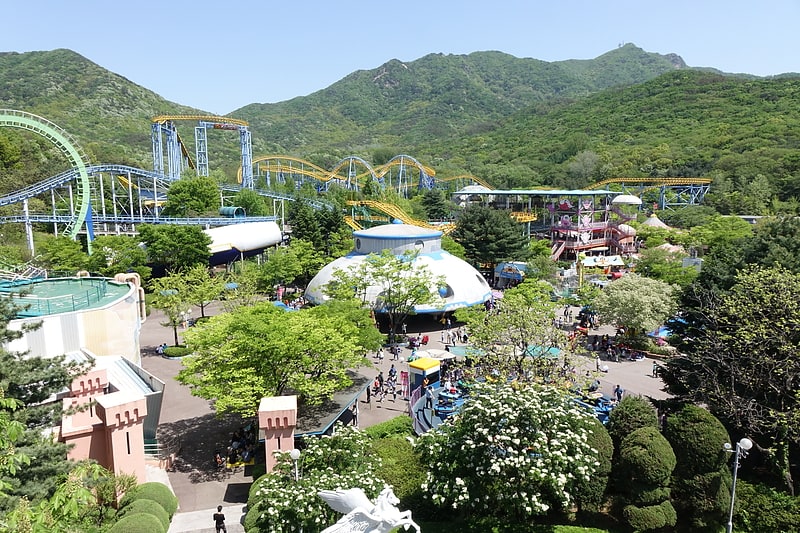
Also known as: 서울랜드
Korea's first theme park, opened in 1988. Seoul Land is an amusement park opened in 1987, in Gwacheon, a city in Gyeonggi-do province, South Korea. It is located in the Seoul Grand Park complex. It opened just before the 1988 Summer Olympics. It has about 40 rides, including roller coasters, and movie theaters. Seasonal festivals are held in the park. It is smaller than Everland, but closer to Seoul, about one hour away from downtown. Approximately 3–3.5 million people visit the park in a year. Roughly a third of its 300,000 m2 is green space, the rest being packed with the attractions.[13]
Address: 181 Gwangmyeong-ro, Gwacheon
Seoul Grand Park, Gwacheon
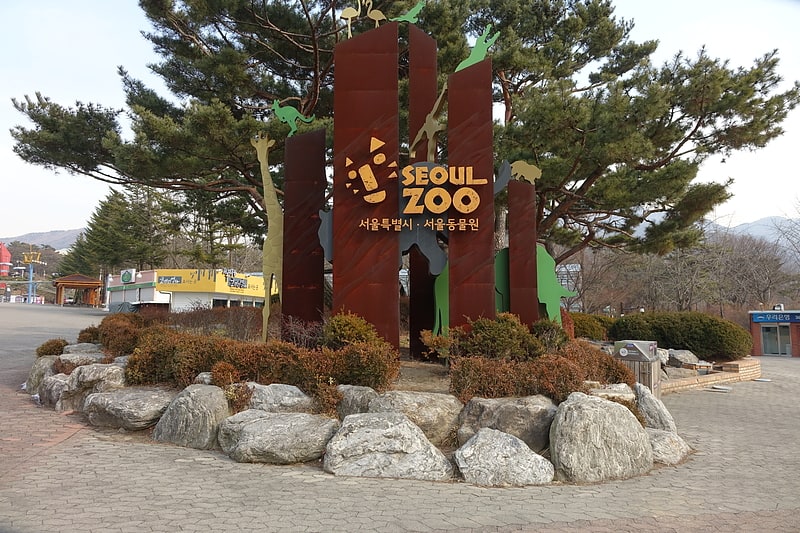
Also known as: 서울대공원
Entertainment area with zoos and exhibits. Seoul Grand Park is a park complex to the south of Seoul, South Korea, in the city of Gwacheon.
Facilities at Seoul Grand Park include hills and hiking trails, Seoul Grand Park Zoo, Children's Zoo, a rose garden, Seoul Land amusement park, and the Seoul Museum of Modern Art.
The attractions all have separate admission fees. Line 4 of the Seoul Metropolitan Subway stops at Seoul Grand Park Station. A shuttle bus from the station visits the art museum and upper park entrance.
This zoological garden has lions, rhinoceros, Siberian tigers, llamas and even macaws and parrots.[14]
Address: 102 Daegongwongwangjang-ro, Munwon-dong, 427-702 Gwacheon-si
Suwon World Cup Stadium, Suwon
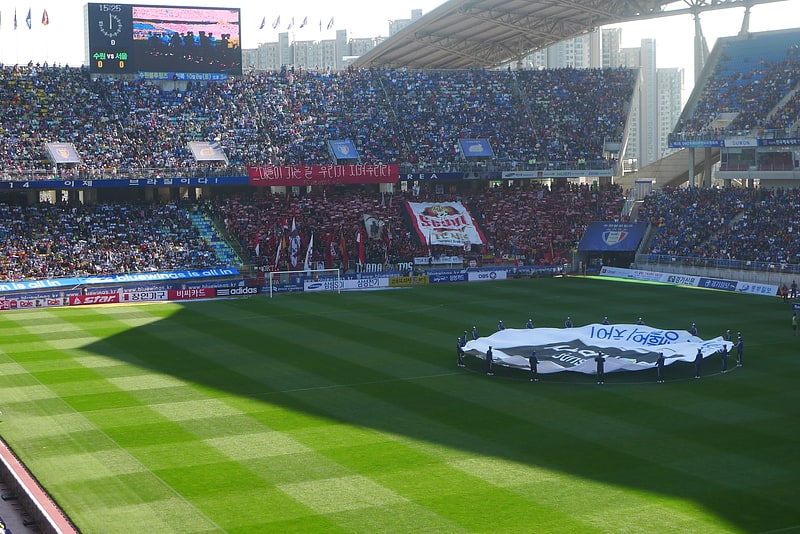
Also known as: 수원월드컵경기장
Stadium. The Suwon World Cup Stadium is a football stadium located in Suwon, South Korea. It has been home of the K League 1 team Suwon Samsung Bluewings since 2001. The capacity of the stadium is 44,031.[15]
Address: 팔달구 월드컵로 310, 16230 수원시
Jeongbang Waterfall, Seogwipo-Si
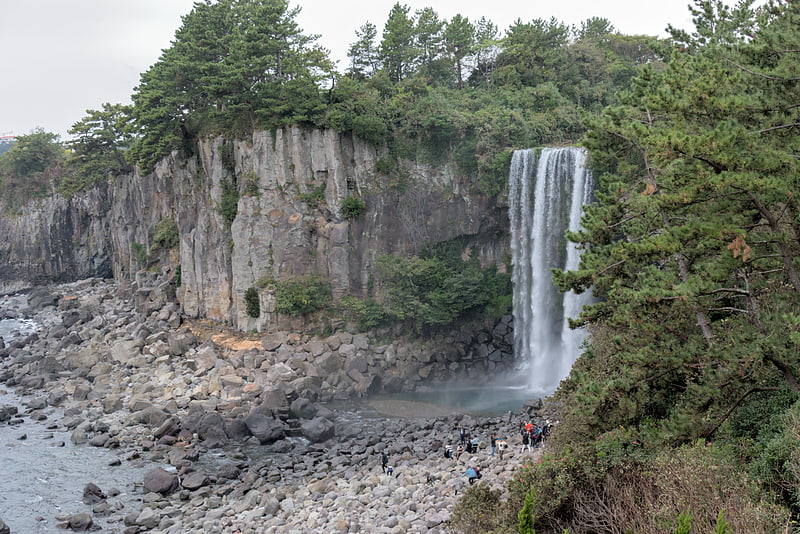
Also known as: 정방폭포
Cliffside waterfall next to the ocean. Jeongbang Waterfall is a famous waterfall on Jeju Island. The waterfall is 23 m high and is very close to the ocean. Depending on the level of recent rainfall, it can be up 8 m wide. The source of the waterfall is the stream Donghong-chun. Located near Seogwipo, Jeongbang Waterfall is a popular tourist attraction. It is considered Yeongjusipgeong, one of the ten greatest scenic wonders of Jeju.
Legend states that a holy dragon lived underneath it. It was said that the dragon's spirit is contained in the water which can cure diseases and bring rain during drought. Furthermore, a nearby small waterfall is said to resemble a servant waiting on a lord.
A legend states that Emperor Jin of China (259 BC - 210 BC) sent a servant, Seobul, to fetch the magical herbs of eternal youth from Mount Halla. Though he failed to find the herb, he encountered Jeongbang Falls on the way and he left his autograph, Seobul Gwaji (which literally means "Seobul was here"), on the cliff wall, where it no longer remains. An inscription on the wall of the waterfall saying "Seobulgwacha", refers to Seobul's journey. The waterfall is one of the three famous waterfalls of Jeju, along with Cheonjiyeon Waterfall and Cheonjeyeon Waterfall. A smaller waterfall, Sojeongbang Waterfall is 300 m to the east.
The waterfall is also known to be a location related to the Jeju uprising, where in 1948, six massacres were committed and the bodies were disposed of downstream over the watefall.[16]
Address: 칠십리로214번길 37, 697-835 서귀포시
National Museum of Modern and Contemporary Art, Gwacheon
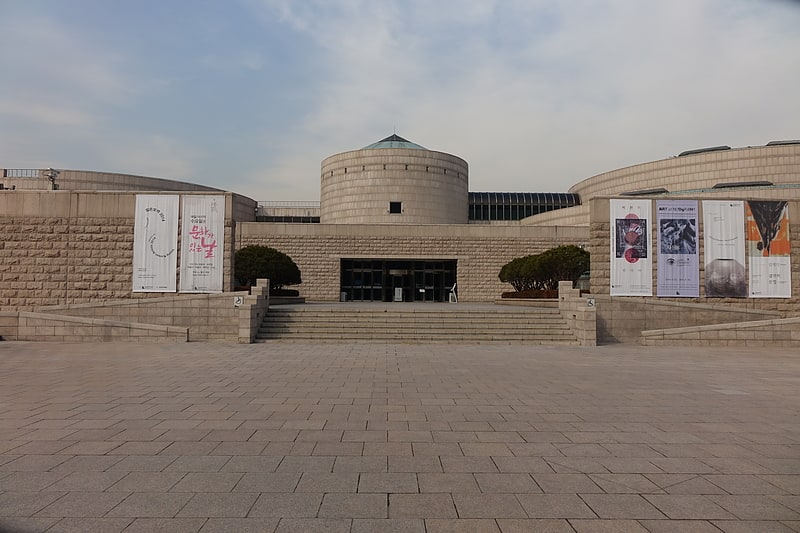
Also known as: 국립현대미술관
Museum. The National Museum of Modern and Contemporary Art, Korea is a contemporary art museum with four branches in Gwacheon, Deoksugung, Seoul and Cheongju. The museum was first established in 1969 as the only national art museum in the country accommodating modern and contemporary art of Korea and international art of different time periods.[17]
Address: 313 Gwangmyeong-ro, Munwon-dong, 427-080 Gwacheon-si
Cheonjeyeon Waterfall, Seogwipo-Si

Also known as: 천제연폭포
Picturesque waterfall with 3 parts. Cheonjeyeon Waterfall is a three-tier waterfall located on Jeju Island. Cold water flows out of the ceiling of a cave to make the waterfall. Between the precipice of the waterfall and the lower clay layer, water springs out. In first cascade, the cliff is 22 m high and the water falls into Cheonjeyeon pond which is 21 m deep. From there, the water goes to the second waterfall and falls 30 m and continues to the third waterfall. Eventually, the water reaches the ocean. Cheonjeyeon means Pond of the Emperor of Heaven. According to Korean legend, seven nymphs would descend from the heavens at night and bathe in the waterfall's pond. The falls are a popular tourist attraction on Jeju-do.
The warm temperate forest around Cheonjeyeon Waterfall was designated Natural Monument No. 378 in 1993 because of the rare plants it contains and its value for scientific research. Rare plants such as the solipnan (솔잎난) plants or skeleton fork fern (Psilotum nudum) can be found around the falls in the crevices of rocks.
Since ancient times, it is thought that standing under the waterfall on the 15th day of the seventh lunar month can cure diseases by the eighth lunar month, though swimming is now prohibited. On the May of even-numbered years, the Chilseonyeo (Seven Nymphs) Festival is held at this location. The waterfall is one of the three famous waterfalls of Jeju, the other two being Cheonjiyeon Waterfall and Jeongbang Waterfall.
Above the falls is Seonimgyo Bridge, which symbolizes the legend of Cheonjeyeon.[18]
Address: 천제연로 132, 697-858 서귀포시
Donghwasa, Daegu

Also known as: 동화사
Buddhist complex with temples and statues. Donghwasa, also Donghwa Temple, is a Buddhist temple of the Jogye Order in northern Daegu, South Korea. The temple is located on the south side of Mt. Palgongsan, within the boundaries of Dohak-dong, Dong-gu, near Daegu's northern border. The name means "Temple of Paulownia Blossoms."[19]
T Express, Yongin
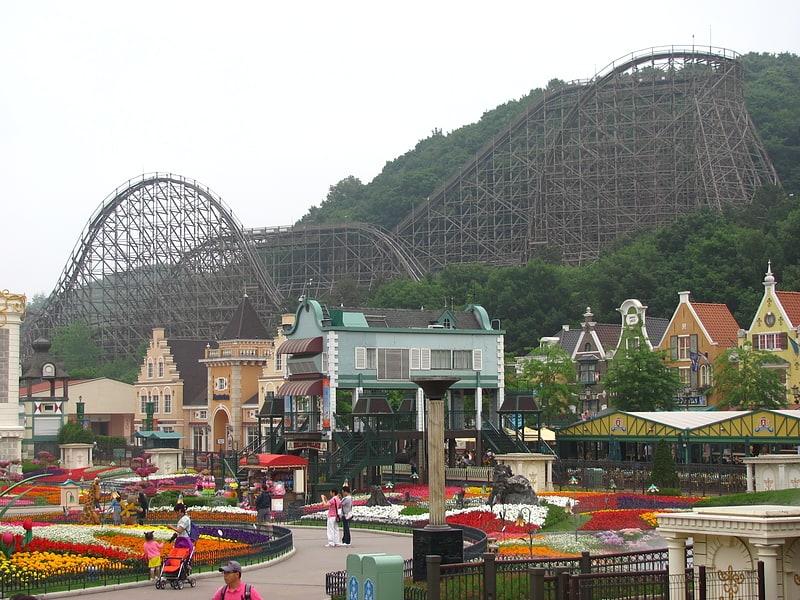
Also known as: T 익스프레스
Roller coaster in Yongin, South Korea. T Express is a wooden roller coaster at Everland in Yongin, South Korea. It is South Korea's first wooden coaster, Intamin's fourth wooden coaster with prefabricated track, the first ride of this type in Asia, and the first to utilize three trains. It is world's fourth steepest wooden roller coaster. It is also the world's ninth fastest, fourth tallest, and third longest wooden roller coaster. It is also built on a hillside, the layout taking advantage of the terrain.
T Express was ranked as the world's best wooden coaster in Mitch Hawker's online poll in 2008 and 2010.
The biggest change brought by T Express was an increase in the number of customers, especially teenagers and university students. The number of college students increased by 14%, and teenagers by 73% according to Everland statistics.
Rocky Mountain Construction, an Idaho-based manufacturing firm, assisted with the construction of the ride.[20]
Address: 처인구 포곡읍 에버랜드로 199, 17023 용인시
Seomun Market, Daegu

Also known as: 서문시장
Traditional market in Daegu, South Korea. Seomun Market is the largest traditional street market in Daegu, South Korea, containing more than 4,000 shops. Seomun Market is particularly known as a source for textiles and sewing services, a key ingredient of Daegu's fashion industry.
The name "Seomun" means "west gate," and refers to the location of the market just outside the old west gate of Daegu Castle, which was demolished in 1907. It is also one of the country's oldest markets, dating to a 5-day market held in the area in the late Joseon Dynasty. In the final years of Joseon, Seomun market was one of the country's three largest markets. The market was constituted in its present form in 1920.
Although portions of the market are in the open air or small buildings, most of the shops are in large buildings holding hundreds or thousands of individual shops. The largest of these buildings was Building 2, which was destroyed by fire in late December 2005. Plans for the reconstruction of Building 2, which held the majority of the market's fabric shops, are still being made. There are four other building complexes, and two other large shopping areas. Side streets in the market area also feature a large number of indoor and outdoor food stalls with fish and traditional dishes.
The market can be reached both by Cheongnaeondeok Station on Daegu Metro Line 2 and Seomun Market Station on Daegu Metro Line 3.
On November 30, 2016, a massive fire destroyed all the stores in the market.[21]
Address: 45, Keunjang-ro 26-gil, Jung-gu, 41926 Daegu (중구)
Baekdamsa, Seoraksan National Park

Also known as: 백담사
Buddhist temple in Inje County, South Korea. Baekdamsa is a Buddhist temple in Inje County, Gangwon province, South Korea. It was originally built in the 7th century, but because of war and natural disasters has been rebuilt numerous times since then. The present version was completed in 1957. Additionally, the name has also changed over time. Originally called Hangyesa, the new name reflects the "100 pits from Daecheongbong Peak to the temple".[22]
Address: 746, Baekdam-ro, Buk-myeon, 24606 Inje-gun
Suwon Sports Complex, Suwon
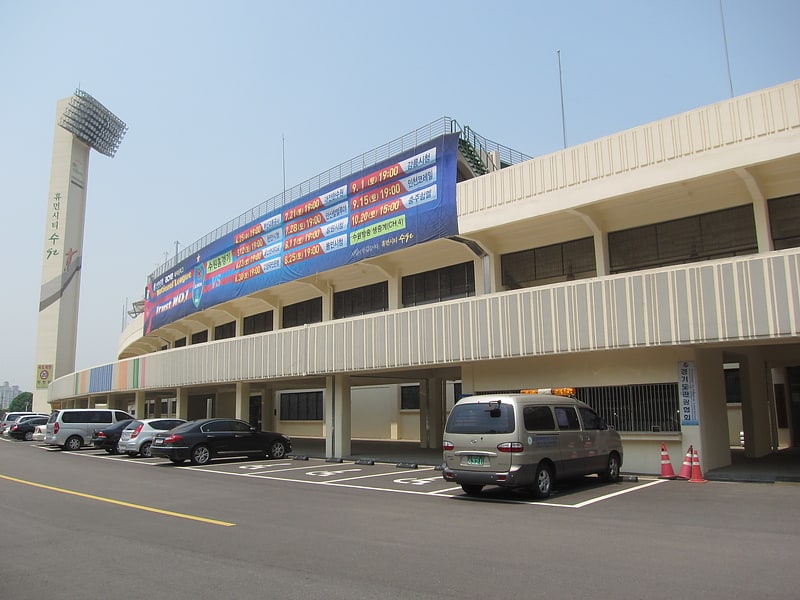
Also known as: 수원종합운동장
Sports facility in Suwon, South Korea. Suwon Sports Complex is a group of sports facilities in Suwon, South Korea. The complex consists of the Suwon Stadium, Suwon Baseball Stadium, and Suwon Gymnasium.[23]
Address: 893, Gyeongsu-daero, Jangan-gu, 16308 Suwon
Incheon Grand Park, Incheon
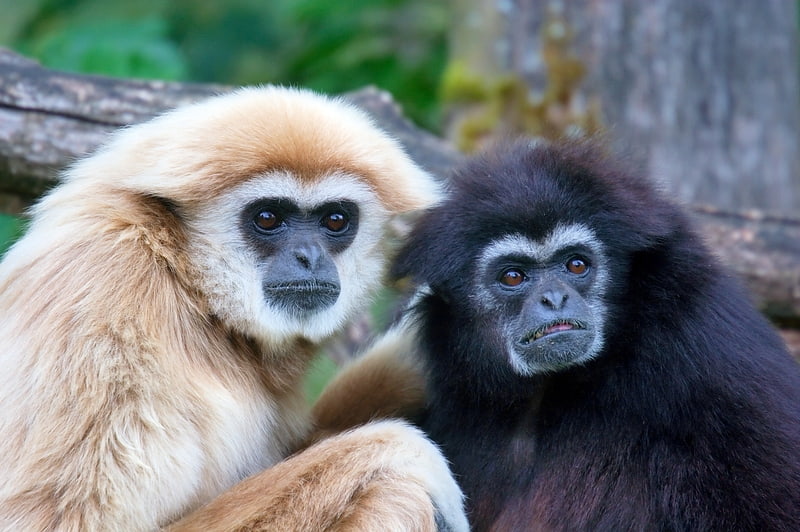
Park in Incheon, South Korea. Incheon Grand Park is a park complex in Namdong-gu, Incheon, South Korea. Facilities at Incheon Grand Park include zoos and botanical gardens.[24]
Museum of Korean Culture, Incheon

Also known as: 한국문화박물관
Museum. The Museum of Korean Culture is located in Concourse 4F in Incheon International Airport in Incheon, South Korea. It houses artifacts and art of cultural significance to Korea. Displays include royal culture, traditional arts, printing, and Hangul, traditional music, Buddhist and Confucian artifacts, garments from the Joseon Dynasty, and items and clothing from daily Korean life. Several artifacts at the museum are recognized by the UNESCO World Heritage.
The exhibits include:
- The Great Dharani Sutra of Immaculate and Pure Light (Korean: 무구정광대다라니경; Hanja: 無垢淨光大陀羅尼經; RR: Mugu jeonggwang dae darani-gyeong) (Hyakumantō Darani), the oldest known wooden slab print in the world dating back to the eighth century, discovered in 1966
- A replica of Jikji, the world’s oldest existing book published by movable metal type, create during the Goryeo Dynasty in 1377
- Yongbieocheonga (Songs of the Dragons Flying to Heaven) and Worin cheongangjigok (Songs of the Moon's Reflection on a Thousand Rivers), two of the earliest works printed in Hangul
- Janggu (a double-headed drum pinched at the middle), Daegeum (a large transverse bamboo flute), and Buk (a drum), via a media arts system
Address: 4/F, ICN Airport, Incheon
Dalseong Park, Daegu

Also known as: 달성공원
Sizable park with a humble zoo. Dalseong Park is a park located in Jung-gu, Daegu, South Korea. The park includes Gwanpungnu Pavilion, a local history hall, a zoo, and some monuments.[26]
Address: 35, Dalseonggongwon-ro, Jung-gu, 41924 Daegu (중구)
Expo Science Park, Daejeon
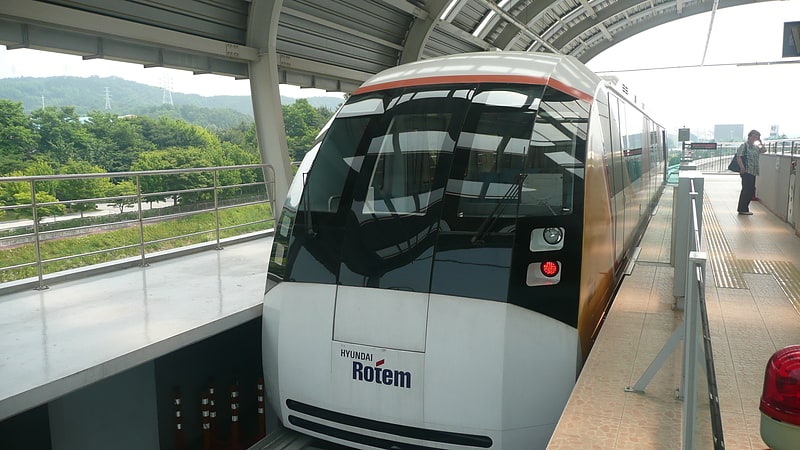
Also known as: 엑스포과학공원
Expo Science Park is a science park in Yuseong-gu to the north of Daejeon, South Korea, built for Taejŏn Expo '93. Facilities at Expo Park included a garden, amusement park, and observation tower. While the tower and some buildings remain, most of the expo buildings have now been removed. As of 2018, the site is hosting the headquarters complex for the Institute for Basic Science.
In September 2014, the Ministry of Science, ICT and Future Planning announced that Expo Science Park would be demolished in stages from November 2014 to August 2015. However, in recognition of their historic value, Hanbit Tower, the international conference room, and the simulation pavilion would be kept. In November 2014, the Shinsegae consortium won a bid to build the science complex within the park.
In September 2017, Studio Cube, a state-run film studio complex on the site of the park, formally opened its doors to film and drama production.
In August 2021, the 2nd Expo Bridge, connecting the park with Seo-gu, opened.[27]
Address: 유성구 대덕대로 516, 305-340 대전광역시 (유성구)
Hwaeomsa, Jirisan National Park
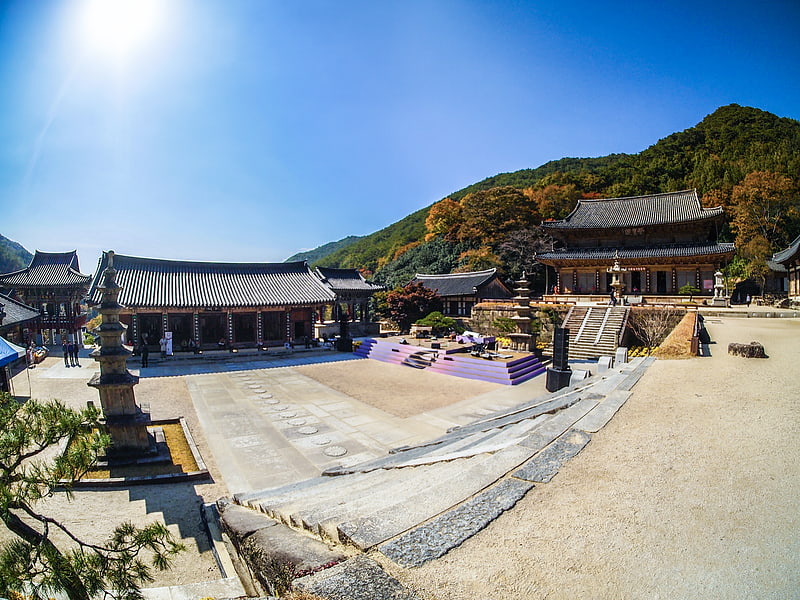
Also known as: 화엄사
Temple in the Gurye County, South Korea. Hwaeomsa literally "Flower Garland Temple” is a head temple of the Jogye Order of Korean Buddhism. It is located on the slopes of Jirisan, in Masan-myeon, Gurye County, in South Jeolla Province, South Korea.[28]
Address: 12, Hwangjeong-ri, Masan-myeon, Jirisan National Park
Daejeon World Cup Stadium, Daejeon
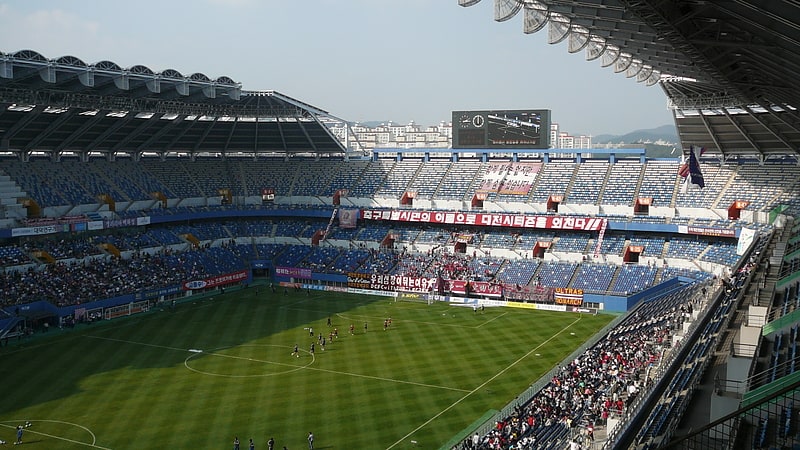
Also known as: 대전월드컵경기장
Stadium in Daejeon, South Korea. Daejeon World Cup Stadium is a football stadium in the South Korean city of Daejeon. It was used to host some matches at the 2002 FIFA World Cup hosted by South Korea and Japan. The stadium displayed a sophisticated structural dynamism, eliminating decorative decoration. Precast Concrete method considering construction and economical efficiency was used. After the World Cup, the stadium was planned to be a multi-purpose sports park, which has a comprehensive sports center and commercial and cultural facilities in the middle of the region. It is now the home stadium of Daejeon Hana Citizen with a capacity of 40,535 seats, replacing Daejeon Sports Complex.[29]
Address: 32 World Cup-daero, Yuseong-gu, 34148 Daejeon (유성구)
Bomunsan, Daejeon
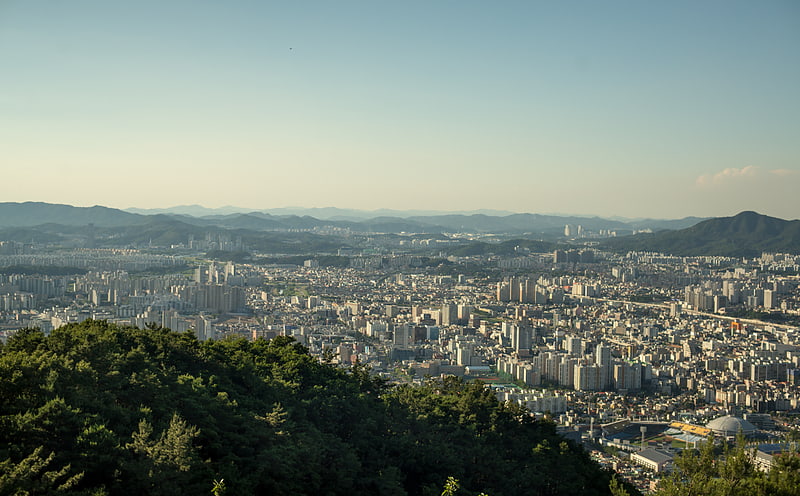
Bomunsan, is an urban mountain park in the south of Daejeon Metropolitan City in Korea, with a peak elevation of 457.6 m. Known as one of the Eight Great Views Daejeon, Bomunsan was established as a park in 1965, and contains multiple culture, sports, and heritage sites, some dating back as far as the Bronze Age.
The vicinity of the mountain is home to multiple amusement, sports, and health facilities including an outdoor concert hall, a Youth Square, and O-World amusement park and zoo, and the Bomunsan Forest Healing Center. Cultural heritage sites include the figure of a seated Buddha figure carved into the mountainside (c. late Goryeo dynasty), and the reconstructed ruins of an ancient fortress, as well as multiple Buddhist temples both within and bordering the park.[30]
Incheon Football Stadium, Incheon
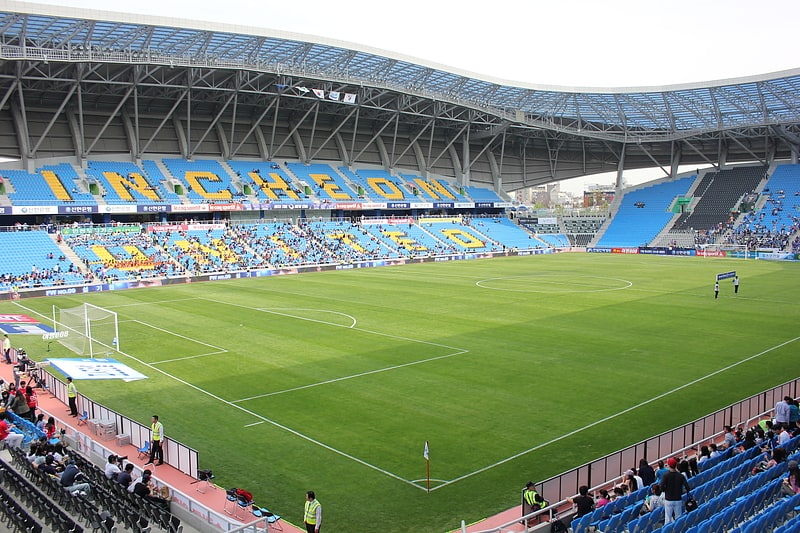
Also known as: 인천축구전용경기장
Stadium in Incheon, South Korea. Incheon Football Stadium, also known as Sungui Arena Park, is a football-specific stadium in Incheon, South Korea. The stadium is currently used mostly for football matches and is the home ground of Incheon United of the K League. The stadium was designed with a capacity of 20,891 spectators. It replaced the much larger Incheon Munhak Stadium. On 11 March 2012, Incheon United officially had its first game since the opening of the stadium on the same day, when they played against Suwon Samsung Bluewings. It was chosen to host matches at the Group and Round of 16 stages of the 2017 FIFA U-20 World Cup.[31]
Address: 246, Chamoejeon-ro, Jung-gu, 22328 Incheon
Jirisan, Jirisan National Park
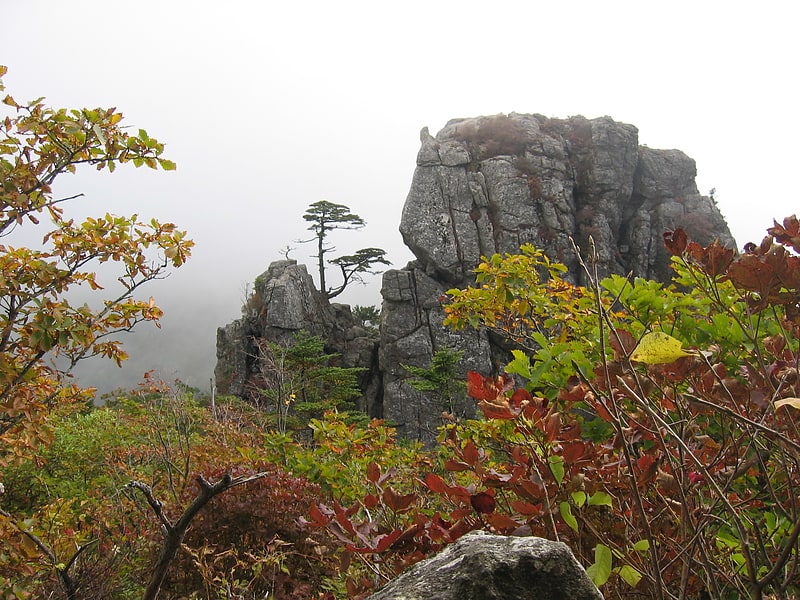
Also known as: 지리산
Mountain in South Korea. Jirisan is a mountain located in the southern region of South Korea. It is the second-tallest mountain in South Korea after Jeju Island's Hallasan, and the tallest mountain in mainland South Korea.
The 1915m-high mountain is located in Jirisan National Park. The park spans three provinces (North, South Jeolla and South Gyeongsang) and is the largest in South Korea. The largest proportion of the national park is in the province of South Gyeongsang. The highest peak of the mountain, Cheonwangbong is also located in this province. Another well-known peak is Samshin-bong (Three Spirits Peak).
Jirisan is at the southern end of the Sobaek and Baekdudaegan mountain ranges, the "spine" of the Korean Peninsula incorporating the Sobaek mountain range and most of the Taebaek mountain range.
There are seven major Buddhist temples on Jirisan. Hwaeomsa is the largest and best-known temple among these. It contains several national treasures, mostly stone artworks from about 600–900 CE. The mountain is also home to the Cheonghak-dong (Azure Crane Village) alpine valley, which includes the Samseonggung (Three Sages Palace), which is a site celebrating one of Korea's foundation myths.
Every year more than 280,000 people visit Jirisan. Summer and autumn are the most popular visiting seasons. The mountain is advertised as having 10 scenic views. These are ‘Sunrise from Cheonwang-bong peak’, ‘Nogodan Sea of Clouds’, ‘Banyabong’s Nakjo’, ‘Full moon at Byukso-ryung’, ‘Piagol Autumn Leaves’, ‘Royal Azalea Blossoming’, ‘Chilseon Valley’, ‘Seomjincheongryu’, ‘Buril water fall’, ‘Yeonha-Sunkyung’. Jirisan National Park has several hiking routes.[32]
Imjingak, Paju
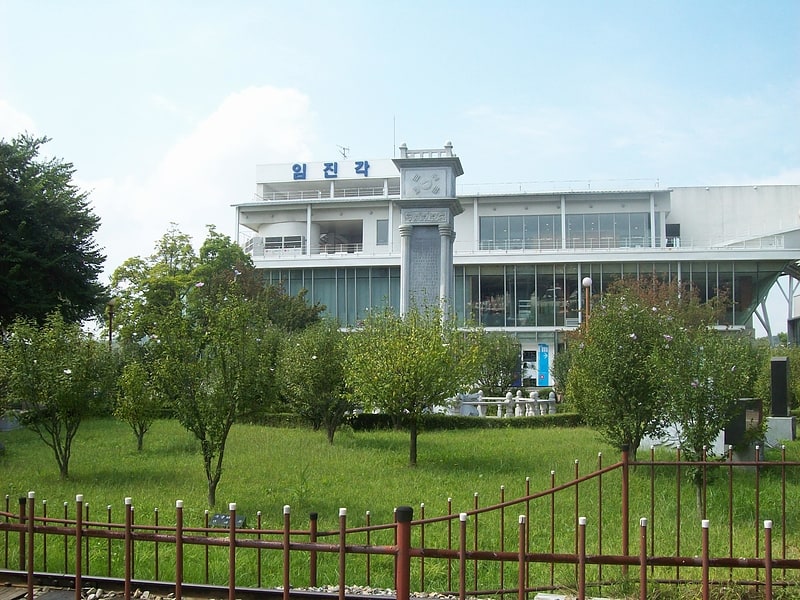
Also known as: 임진각국민관광지
Korean War monuments and sculptures. Imjingak, and sometimes in English called the Imjingak resort, is a park located on the banks of the Imjin River along the tracks of the former Gyeongui Train Line outside the city of Paju, South Korea. The park has many statues and monuments regarding the Korean War. There is also a restaurant, an observation deck, a pool in the shape of the Korean peninsula, and even a small amusement park.
The park was built in 1972 to console those from both sides who are unable to return to their hometowns, friends and families because of the division of Korea and currently receives approximately 1.2 million visitors per year.
Imjingak is where the "Freedom Bridge" lies. Crosses the Imjin river, it is a former railroad bridge which was used by repatriated POWs/soldiers returning from the North. It is more famous, however, and until 1998 was the only point of egress in the western sector other than Liberty Bridge (which was controlled by the South Korean Army) onto the DMZ, and the only direct link to Camp Greaves, Liberty Bell, and Panmunjom. This is not to be confused with the "bridge of freedom" which is merely an access bridge to the main span that allowed the one way southbound traffic to pass by while northbound traffic stood waiting its turn to cross; it now crosses a stream adjacent to the Imjin river and connects with the North-South railway.[33]
Jeondong Cathedral, Jeonju
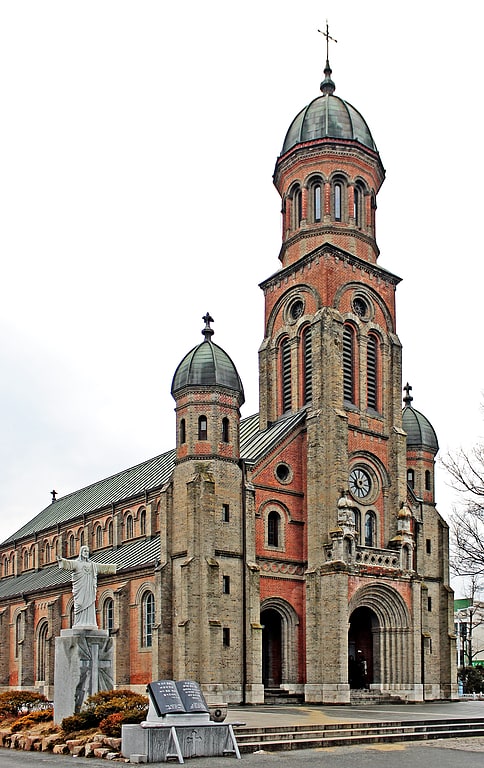
Also known as: 전동성당
Catholic church in Jeonju, South Korea. The Jeondong Cathedral also known as the Old Cathedral of Jeondong and now as the Jeondong Church of Francis Xavier is an important Catholic church in Jeonju, South Korea.
The cathedral building, of Roman-Byzantine style, was built between 1908 and 1914 by Victor Louis Poisnel (1855-1925). It is in the territory and under the supervision of François-Xavier Baudounet (1859-1915), a French priest, born in Mostuéjouls in Aveyron, in the same place where many Christians were martyred. This church, located in the city center, near the traditional Jeonju Hanok Village, is a historic site (KB) #288.
Currently a parish church, the cathedral belongs to the Diocese of Jeonju (Dioecesis Ieoniuensis or 전주 교구).
Sacred Heart Kindergarten is a facility attached to the cathedral, while Jeonju Sacred Heart Girls' Middle School (Wheein and Hwasa's former school) and Jeonju Sacred Heart Girls' High School are nearby.[34]
Address: Jeon-dong, 태조로 51, 560-040 Jeonju
Daewangam Park, Ulsan
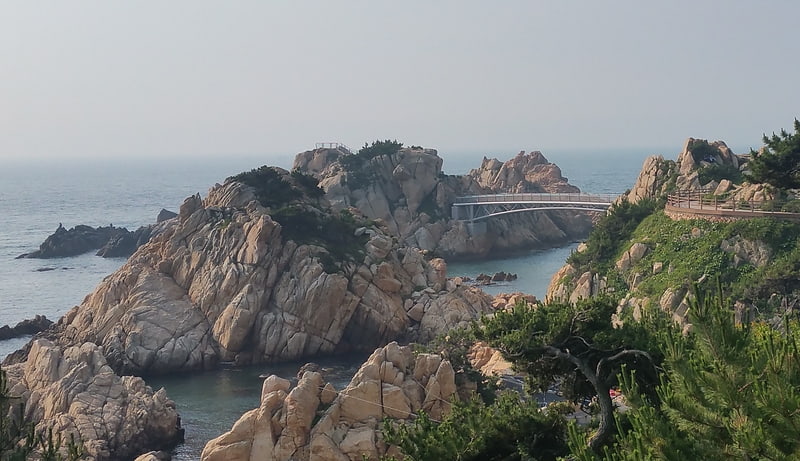
Park in Ulsan, South Korea. Daewangam Park is a resting place in Ilsan, Dong-gu in the city of Ulsan. The total area covers 942,000 square metres, and there is a sand field in Ilsan Beach next to the park. Daewangam Park is famous for its lighthouse the guidance of the 'Ulgi'. From the entrance to the park to the lighthouse, there is a 600-meter-long pine forest spanning. On the beaches of Daewangam Park, there are huge boulders of rock formations that look like prehistoric dinosaur fossils are lying down. At the end of the park, there is Daewangam. Daegwanggyo Bridge, which connects land and Daewangam, was built and donated by Hyundai Heavy Industries Co. in 1995.
At night, a subtle neon light encloses surrounding the Daewangam and creates a unique atmosphere. In connection with the scenic beauty of the night, Daewangam Moonlight Festival has been held since 2012. Daewangam Moonlight Festival is a representative cultural event of Ulsan Dong-gu, which is held every year since 2012. Usually, it opens at Daewangam Park during the evening of September to October. In 2017, the event was titled 'The Hundred Years of Light meets the Thausand Years of Sound.' It is performed various cultural performances such as Si-nangsong, dance, and singing. And after the performances, 'Walking along the moonlight' is proceed. There are about 1000 participants attending the event.
And Daewangam Solbaramgil walking festival has been held in 2017. It is a walking festival hosted by Ulsan Dong-gu, the theme of "Let's be drunk with the scent of pine trees and waves." The walking course is 4.1km long and walks from Daewangam Park to nearby Ilsan beach. Around 1,300 people attend this walk festival.[35]
Address: Ilsan-dong, Dong-gu, Ulsan
Gwanggyosan, Yongin
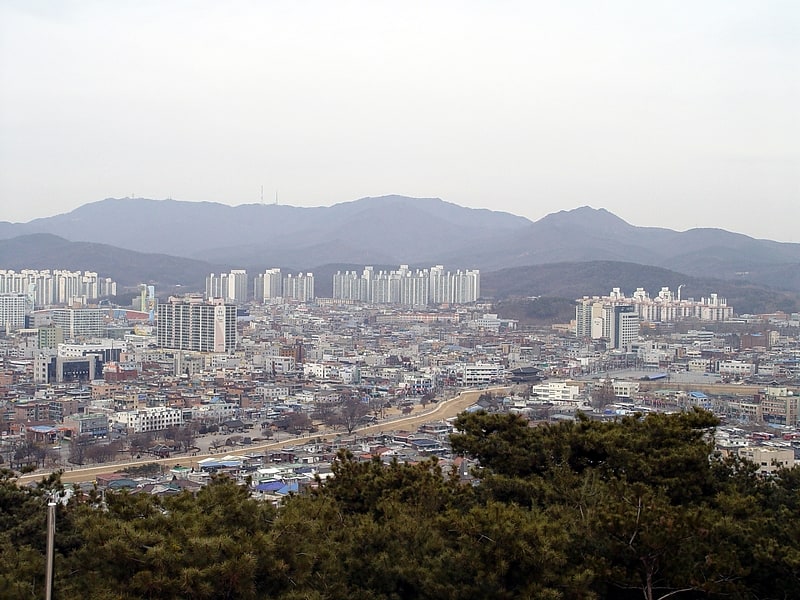
Also known as: 광교산
Mountain in South Korea. Gwanggyosan is a mountain in Gyeonggi Province, South Korea. It lies on the border of Suwon and Yongin, though the wider range extends north and so also borders Uiwang, Gwacheon, Seoul, and Seongnam.
The summit offers views across Suwon, Yongin, and Bundang. The mountain is commonly hiked from Gwanggyo Reservoir in Suwon.[36]
Ulgi Lighthouse, Ulsan
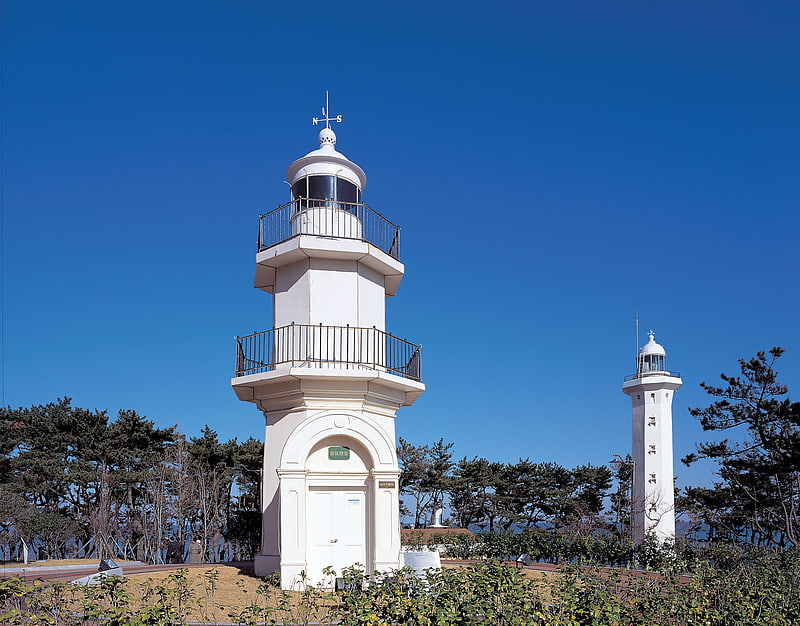
Also known as: 울기항로표지관리소
Lighthouse in Ulsan, South Korea. The Ulgi Lighthouse is a lighthouse in Ulsan, South Korea.[37]
Address: 동구 등대로 155, Ulsan
Jeonju World Cup Stadium, Jeonju

Also known as: 전주월드컵경기장
Stadium in Jeonju, South Korea. Jeonju World Cup Stadium is a football stadium in the South Korean city of Jeonju. It is the home of Jeonbuk Hyundai Motors. The stadium's capacity is 42,477. The final of 2011 AFC Champions League was held at this stadium.[38]
Address: 덕진구 기린대로 1055, 54809 전주시
Manjanggul, Jeju Island

Also known as: 제주 김녕굴 및 만장굴
Cave in Jeju City, South Korea. The Manjanggul Lava Tube is located in Gimnyeong-ri, Gujwaeup, Jeju City. At up to 23m wide, 30m high and 8.928km long, it is the 12th-longest lava tube in the world and the second longest on Jeju island. It is regarded as having significant scientific and heritage value, owing to its excellent condition of preservation despite its age of formation.
Lava stalactites and lava stalagmites, lava columns, lava flowstone, lava helictites, lava blisters, cave coral, benches, lava rafts, lava bridges, lava shelves, grooved lava striations, and ropy lava are well-preserved. Among them, a lava column of 7.6 m is the largest known in the world. There are three entrances and No. 2 heading southward is open to the public.
Entrance No. 3 contains the most favorable habitats for cave life and between Entrances 1 and 2, there is a lower level main tube where most of the living creatures can be found. In the Geomunoreum Lava Tube System, the Manjanggul Lava Tube has the greatest number of living creatures, including the Jeju cave-spider. In the upper part of Entrance 2, there are at least 30,000 common bent-wing bats forming the largest colony of bats confirmed to be living in Korea so far.[39]
Address: 구좌읍 만장굴길 182, 63348 제주시
Samseonggung, Jirisan National Park
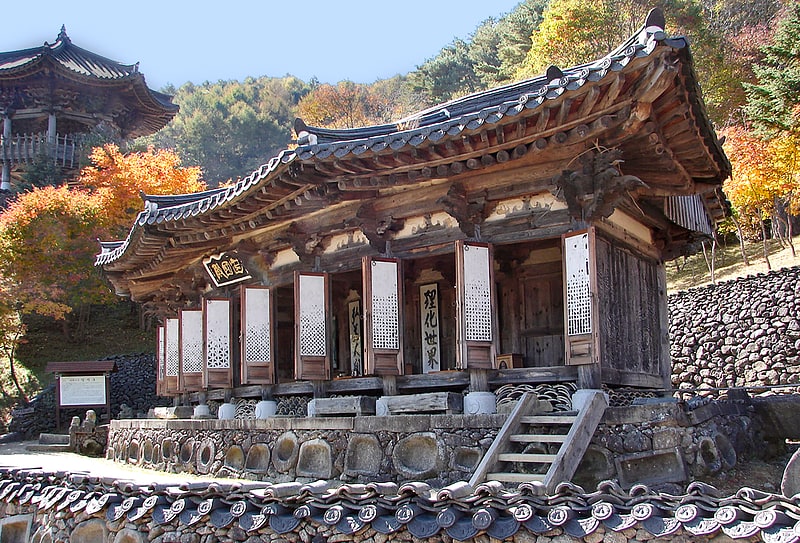
Tourist attraction in Hadong County, South Korea. Samseong-gung is a shrine along the slopes of Jiri Mountain, Hadong county in South Gyeongsang Province, that was created for paying homage to the three mythical founders of Korea:
- Hwanin (환인) - or "Divine Regent". In the traditional Dangun mythology Hwanin is portrayed as the Emperor of Heaven himself.
- Hwanung (환웅) - or "Supreme Divine Regent" is Hwanin's son, who in the traditional Dangun mythology, descended to the peak of a sacred mountain long ago to bring civilized government and thus "benefit humanity".
- Dangun Wanggeom (단군왕검) - or "Grandson of Heaven" is the half-human/half-divine son of Hwanung. Dangun was the fabled founder of Gojoseon, the first Korean kingdom, around present-day Liaoning, Northeast China, and the Korean Peninsula. Dangun is said to have founded the kingdom in 2333 BCE.
Address: 1561-1, Mukgye-ri, Cheongam-myeon, Jirisan National Park
Asia Culture Center, Gwangju

The Asia Culture Center, also referred to as ACC, is an arts complex in Gwangju, South Korea. It was opened in November 2015. It consists of five main buildings: the ACC Culture Exchange; the ACC Children; the ACC Archive & Research; the ACC Creation; and the ACC Theater. The center is a member of South Korea's Ministry of Culture, Sports and Tourism.[41]
Address: 38, Munhwajeondang-ro, Dong-gu, 61485 Gwangju
May 18th National Cemetery, Gwangju
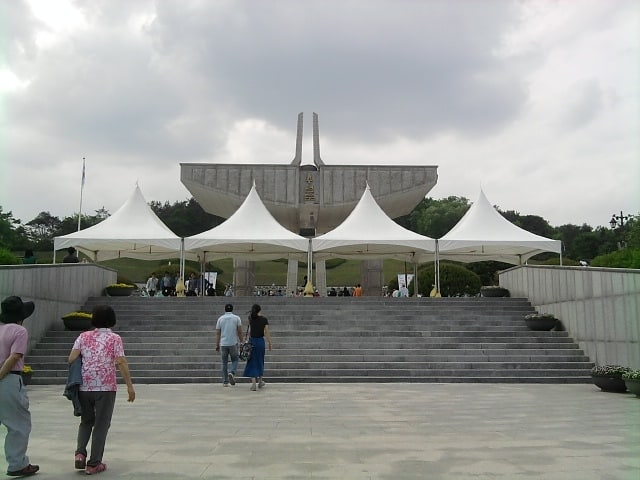
Also known as: 국립5·18민주묘지
Cemetery in Gwangju, South Korea. May 18th National Cemetery is a cemetery for those who participated in the Gwangju Uprising. Built by the government of South Korea in 1997, it is located in Gwangju. Every May, on the anniversary of the uprising, it is common for citizens to visit the cemetery to honor the dead.[42]
Address: 200 Minju-ro, Buk-gu, 61045 Gwangju
Yunggeolleung, Hwaseong

Also known as: 융건릉
Scenic spot in Hwaseong, Gyeonggi, South Korea. Yungneung and Geolleung are two royal tombs from the Joseon Dynasty within an oak-forested park in Hwaseong, South Korea. Yungneung is the tomb of Crown Prince Sado and Princess Hyegyeong, while Geolleung houses King Jeongjo and Queen Hyoui. The tombs are part of the UNESCO-listed World Heritage Site of the Royal Tombs of the Joseon Dynasty.[43]
Address: 효행로481번길 21, Hwaseong
Nexon Computer Museum, Jeju City
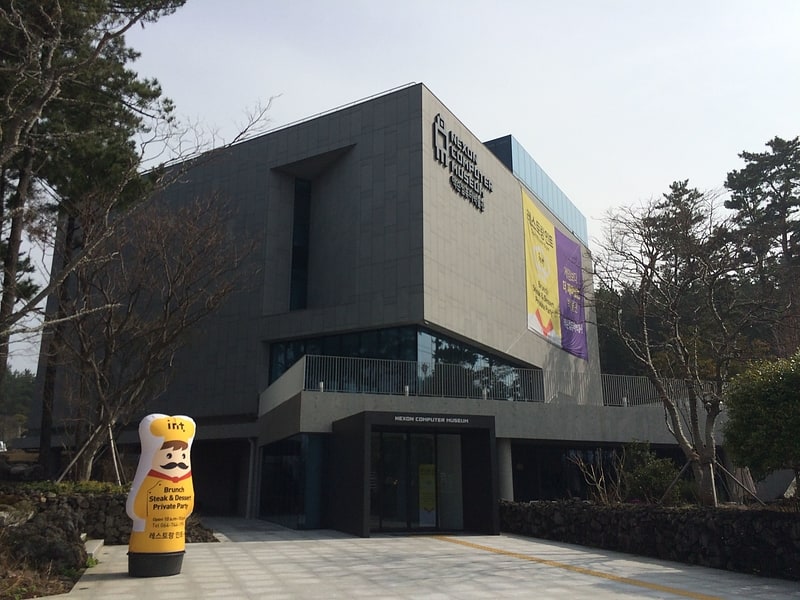
Also known as: 넥슨컴퓨터박물관
Museum in Jeju City, South Korea. The Nexon Computer Museum is a museum on Jeju Island, South Korea. It opened on July 27, 2013. It is known as one of the first permanent museum in Korea that is dedicated for the history of computer and video games. In 2017, the museum houses 6,900 items including personal computers, video game consoles, arcades, and software. The museum's supporters include institutions such as Computerspielemuseum Berlin and International Center for the History of Electronic Games, and IT companies such as Nexon, Softmax, Gamevil, Oculus VR, Thalmic Labs, Take-Two Interactive, Sony Computer Entertainment, etc. The principle of Nexon Co. Ltd.'s museum is to interact and communicate with a range of visitors from across boundaries, by collecting, preserving, researching, exhibiting and educating historic digital artifacts.[44]
Address: 3198-8 1100(Cheonbaek)-ro, Nohyeong-dong, 690-180 Cheju
Magoksa, Gongju
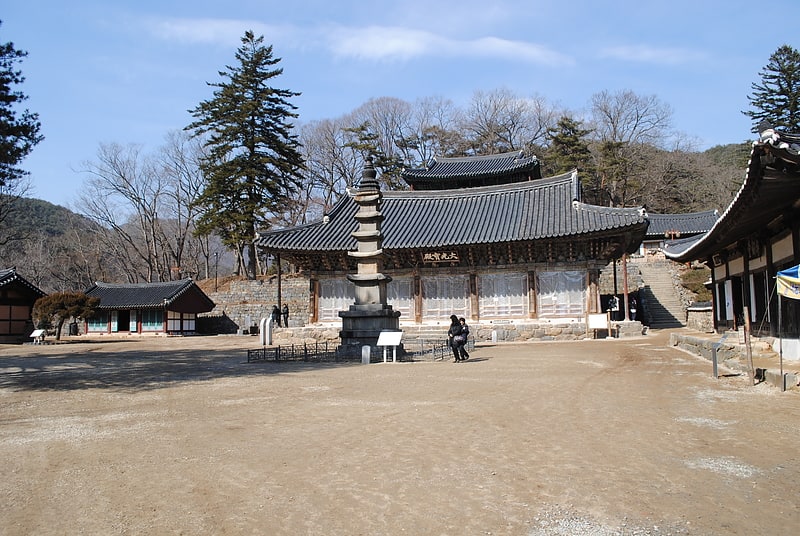
Also known as: 마곡사
Temple in Gongju, South Korea. Magoksa is a head temple of the Jogye Order of Korean Buddhism in Gongju, South Korea. It is located on the eastern slope of Taehwasan, on taegeuk-shaped bend in the Taegeukcheon Stream.[45]
Address: 567, Unam-ri, Sagok-myeon, 314-872 Gongju
Ilsan Lake Park, Goyang
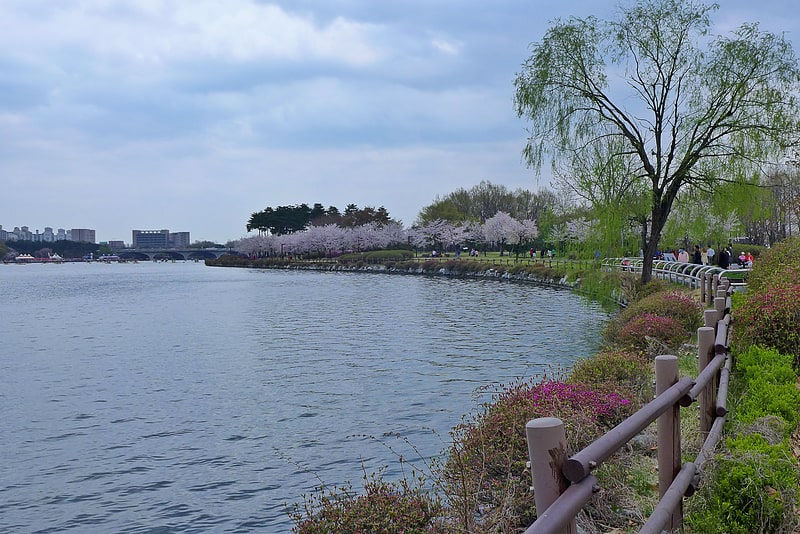
Also known as: 일산 호수공원
Park in Goyang, South Korea. Ilsan Lake Park is a city park in Janghang-dong, Ilsan-gu district, Goyang city, Gyeonggi-do Province, South Korea.[46]
Address: 일산동구 호수로 595, 10400 고양시
Simwonsa, Gayasan National Park

Also known as: 심원사
Buddhist temple in Seongju County, South Korea. Simwonsa is a Buddhist temple of the Jogye Order in Seongju-gun, North Gyeongsan, South Korea.[47]
Independence Hall of Korea, Cheonan
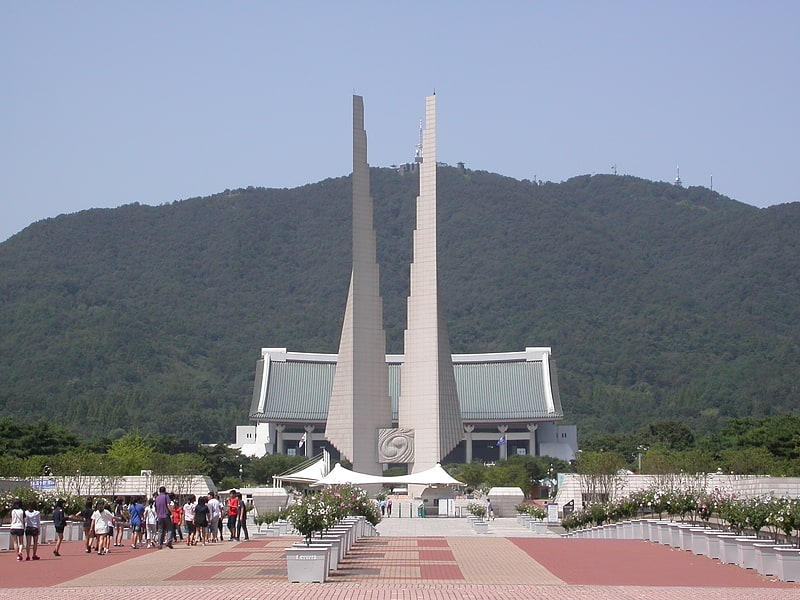
Also known as: 독립기념관
Museum in Cheonan, South Korea. The Independence Hall of Korea is a Korean history museum in Cheonan, South Korea. Opened on August 15, 1987, it has the largest exhibition facility in South Korea, with a total floor area of 23,424 m². The museum focuses on the independence movements of the Japanese colonial period; however, the first exhibition hall, The Hall of National Heritage, is dedicated to the period ranging from prehistoric times to the Joseon Dynasty. It has seven indoor exhibition halls and a Circle Vision Theater.[48]
Address: 95 Sambang-ro, Mokcheon-eup, 330-843 Cheonan
Ho-am Art Museum, Yongin

Also known as: 호암미술관
Korean paintings in a theme park. The Ho-Am Art Museum is an art museum in Yongin, Gyeonggi-do, South Korea, approximately 40 km south of Seoul. It holds a number of traditional Korean paintings.
The museum was built in 1982 by Samsung and named after their former chairman, Lee Byung-chull. Ho-Am is his pen name which means filling up a space with clear water as lakes do, and being unshakeable as a large rock. It is located in the Everland Resort. The museum includes a re-created Korean traditional garden, known as the Hee Won Garden.[49]
Address: 38, Everland-ro 562beon-gil, Pogok-eup, Cheoin-gu, 17021 Yongin
Yongjusa, Hwaseong
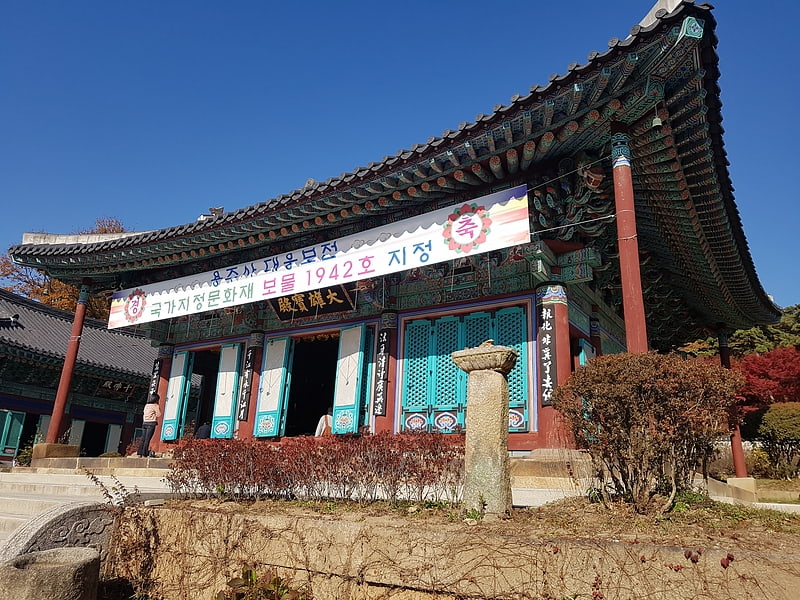
Also known as: 용주사
Buddhist temple in a serene setting. Yongjoosa is a head temple of the Jogye Order of Korean Buddhism. It is located in on the slopes of Hwasan in Taean-eup, Hwaseong, in the province of Gyeonggi, South Korea. The temple's name means "dragon jewel temple."
Two large bells in the temple are believed to date to the Unified Silla period. One of them, the "Bell of Yongjoosa", is designated national treasure 120.
The temple was initially established in 854 AD, under the name Garyangsa. It was expanded in the 10th century. It was rebuilt in the late 18th century under the orders of Jeongjo in honor of his deceased father, Prince Sado. This is one of few cases where the Joseon royal house supported Buddhism directly. At this time the temple changed to its current name.
The temple is located near Seoul Subway Line 1, and is also connected to Suwon by intercity bus.[50]
Address: 용주로 136, 18347 화성시